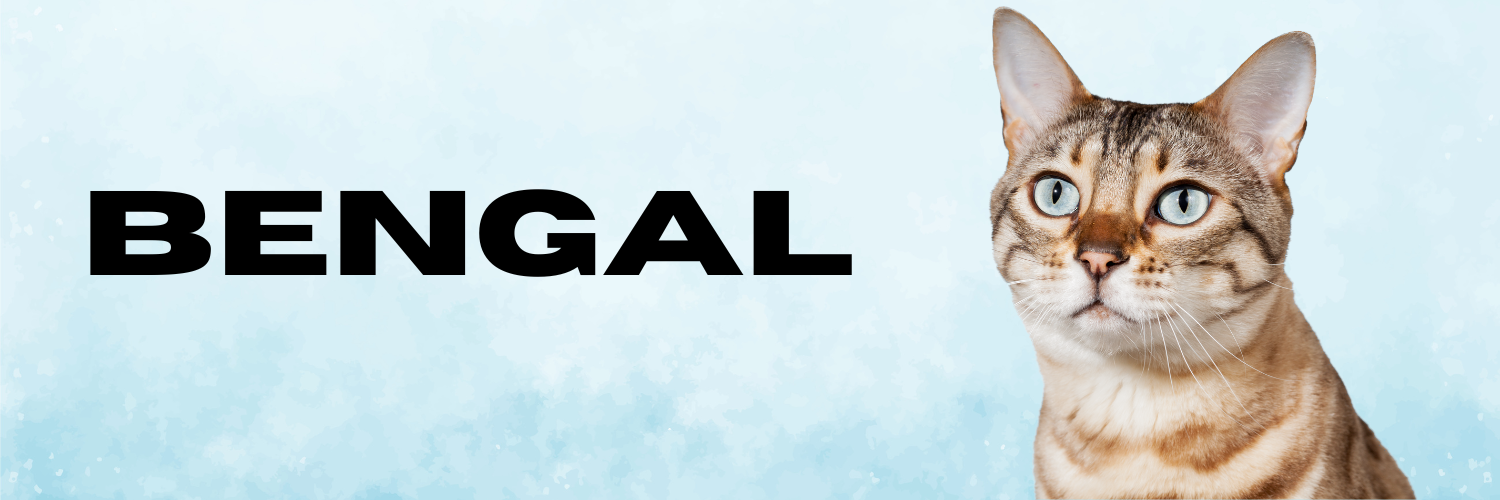
Bengal Cat: The Wild Beauty in a Domestic Package
The Bengal cat is one of the most stunning and energetic domestic cat breeds in the world. Known for its wild appearance and affectionate nature, the Bengal cat is the perfect blend of exotic looks and loving companionship. With a coat resembling that of a leopard and a personality full of life, the Bengal has captured the hearts of cat lovers across the globe.
Origin and History
The Bengal cat breed originated in the United States during the 1960s when breeders began crossing domestic cats with the Asian leopard cat (Prionailurus bengalensis), a small wild feline native to Asia. The goal was to create a domestic cat with the beauty of a wild cat but with a friendly and manageable temperament. Jean Mill, an American breeder, played a crucial role in developing and stabilizing the breed. By the 1980s, Bengal cats were being bred for domesticated traits, and they quickly gained popularity among exotic pet enthusiasts.
Physical Appearance
Bengal cats are best known for their striking coat, which resembles that of a wild jungle cat. Their short, soft fur is adorned with distinctive patterns such as rosettes, spots, and marbling, giving them a wild and exotic look. Their coat comes in various shades including golden, silver, snow, charcoal, and blue.
Bengals are medium to large-sized cats with muscular builds, long bodies, and sleek contours. Their eyes are usually green or gold and are wide-set, adding to their intense and intelligent gaze. Their tails are thick and carried low, and their hind legs are slightly longer than their front legs, giving them a powerful and agile appearance.
Temperament and Behavior
Despite their wild appearance, Bengal cats are known for being highly affectionate, loyal, and social animals. They form strong bonds with their human families and often follow their owners around the house. They are also highly intelligent and curious, always exploring and investigating their environment.
Bengals are energetic and love to play. They enjoy interactive toys, climbing, and even playing in water—something that sets them apart from many other cat breeds. Due to their intelligence, they can learn tricks, enjoy puzzle toys, and may even be leash-trained for outdoor adventures.
However, Bengals are not typically lap cats. They prefer being active and involved rather than cuddling for long periods. They thrive in environments that provide plenty of stimulation and interaction.
Care and Maintenance
Caring for a Bengal cat involves more than just basic needs. While their short coats require minimal grooming—usually just a weekly brushing—they do need a lot of mental and physical stimulation. Without it, Bengals can become bored and potentially destructive.
It’s important to provide them with a variety of toys, cat trees, and climbing shelves. Regular playtime and interaction are essential for their happiness. Due to their intelligence, Bengals may also benefit from training sessions and enrichment activities.
Feeding a high-quality diet tailored to their active lifestyle is crucial. Regular veterinary care, vaccinations, and parasite control are necessary to ensure they stay healthy.
Health Considerations
Bengal cats are generally healthy, but like all breeds, they may be prone to certain genetic conditions. Some of the potential health issues include:
Hypertrophic Cardiomyopathy (HCM)
Progressive Retinal Atrophy (PRA)
Flat-chested Kitten Syndrome (FCKS)
Hip Dysplasia
Reputable breeders screen for these conditions to ensure the health of the kittens. Adopting from a responsible breeder or rescue organization is essential.
Is a Bengal Cat Right for You?
If you’re looking for a cat with a wild appearance, boundless energy, and a dog-like personality, the Bengal cat might be the perfect fit. However, they require a lot of attention and stimulation, so they may not be ideal for those looking for a low-maintenance pet. Bengals are best suited for households that can offer time, space, and engagement.
